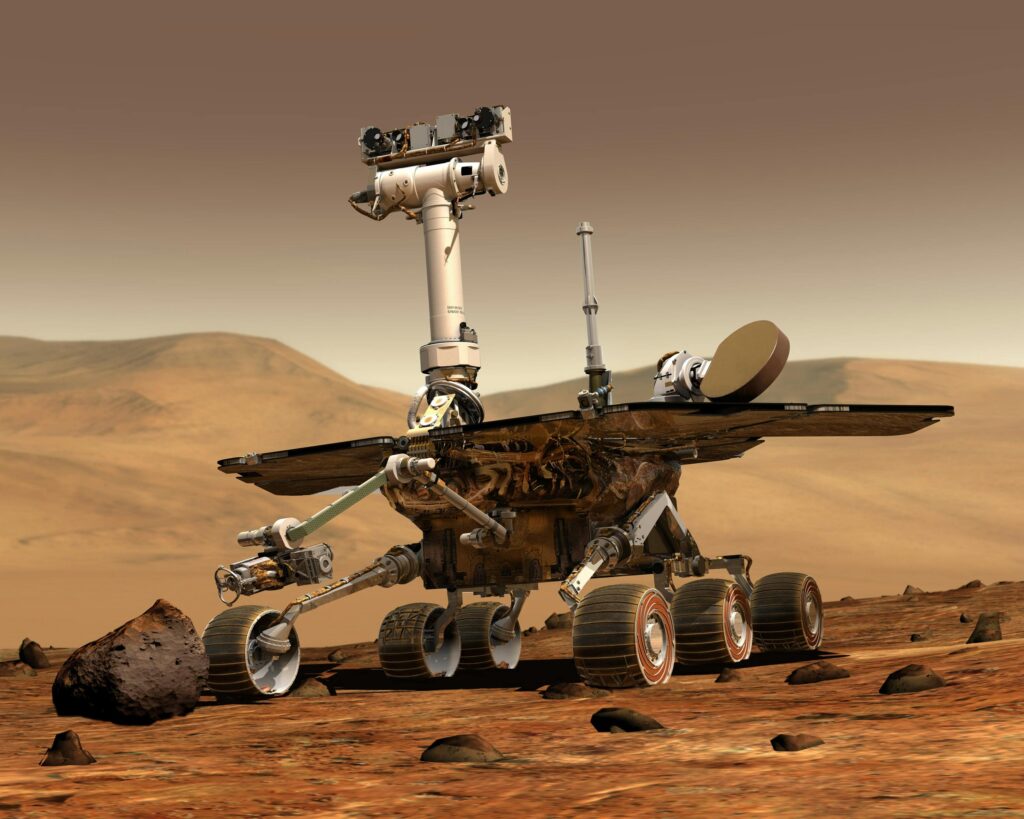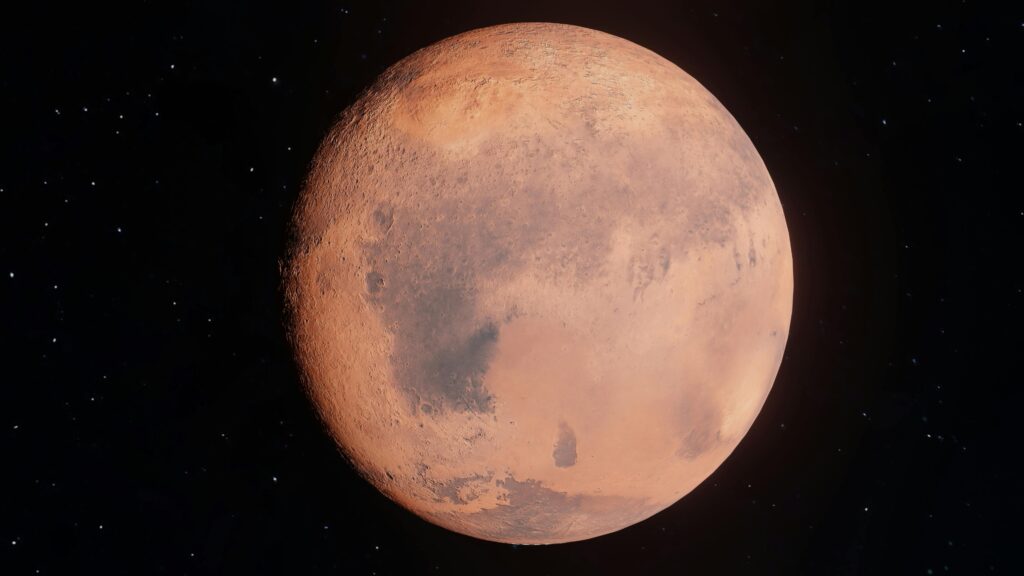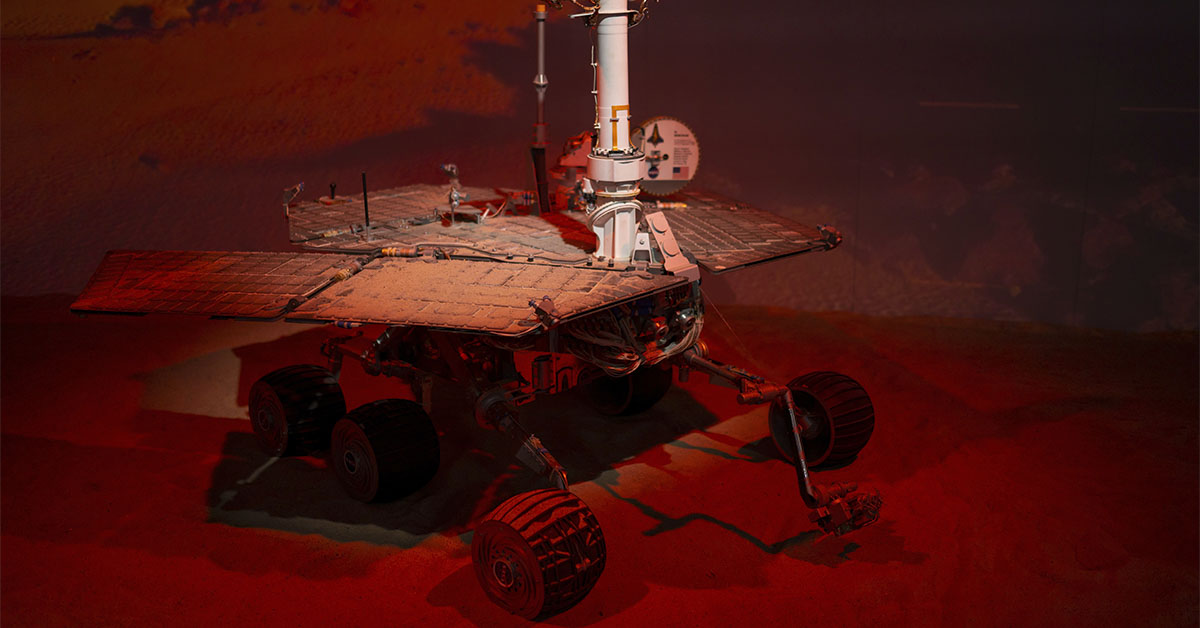NASA’s unwavering commitment to exploring the stars has led to incredible insight into the stars. In 1997, NASA landed their first rover on our planetary neighbour Mars. Sojourner became the first rover to roam on another planet and gave humanity our first glimpse of the Martian soil. Then on July 7, 2003 NASA launched their Opportunity Rover, as part of the Mars Exploration Rover program.
The Birth of Mars Exploration

The rover landed in Meridiani Planum on January 25, 2004, 3 weeks after its twin rover Spirit had touched down. Both rovers landed on opposite sides of Mars in areas scientists suspected once held water. The rovers were designed to uncover a variety of rocks and investigate potential evidence of water on the Red Planet. Opportunity has also uncovered evidence that Mars could have once potentially hosted microbial life.
A Mission Beyond Expectations

Both of NASA’s rovers exceeded their lifespan expectation of 90-sols (Martian days), which is approximately 92.5 Earth days. The rovers were designed for a 90-sol mission, however Spirit continued to send back data for 6 years before dying. Opportunity operated for 5,111 sols, which is approximately 15 years on Earth, before being destroyed in a planet-wide storm.
The rover exceeded its planned lifespan by 55 times, far surpassing NASA’s most optimistic projections for the mission’s duration. NASA’s Opportunity Rover became the first vehicle to complete a marathon distance on another planet. The rover achieved this milestone on March 24, 2015, during its 3,968th Martian day. Opportunity traveled 28 miles (45 km) by the end of its mission.
Revolutionary Scientific Discoveries
The rover made groundbreaking discoveries about Mars’ ancient environment throughout its mission. NASA’s Opportunity Rover found evidence that Mars once had environments with liquid water soaking the ground. The rover discovered several types of evidence showing ancient wet conditions that were less acidic and more favorable for microbial life. These findings suggest that Mars could have once been a habitable planet in its distant past.
The Planet-Wide Dust Storm
As a planet-wide dust storm began developing on Mars in late May 2018, Opportunity went into hibernation to conserve resources. NASA’s Mars Reconnaissance Orbiter first detected the storm on May 30, 2018. The storm expanded rapidly, blanketing a quarter of the planet by June 12. By June 19, scientists officially classified it as a “planet-encircling dust event“. NASA attempted to contact the Opportunity rover for over half a year before finally declaring its mission over in February 2019. NASA then publicly announced:
“The Opportunity rover stopped communicating with Earth when a severe Mars-wide dust storm blanketed its location in June 2018. After more than a thousand commands to restore contact, engineers in the Space Flight Operations Facility at NASA’s Jet Propulsion Laboratory (JPL) made their last attempt to revive Opportunity Tuesday, to no avail. The solar-powered rover’s final communication was received June 10.”
Read More: NASA Detects Mysterious Deep Space Object Sending Signals Every 44 Minutes
Opportunity’s Final Communication
NASA’s Opportunity Rover sent its last message on June 10, 2018, during the 5,111th sol of its mission. Several news outlets reported the rover’s final words as “my battery is low and it’s getting dark”. This is odd as the rover does not communicate in words.
However, Snopes points out that it was a rough translation by science journalist Jacob Margolis. Margolis was just summarizing what two NASA engineers told him. “It also told us the skies were incredibly dark, to the point where no sunlight gets through. It’s night time during the day” is what project manager John Callas told Margolis of the rover’s final message. .
The Haunting Last Image
The rover’s final transmission included an incomplete, dark image taken with its Panoramic Camera. NASA’s Opportunity Rover pointed its solar filter at the Sun, but the dust storm blocked all sunlight. The resulting image appeared almost completely dark with white speckles of camera noise. The transmission stopped before the full image was sent, leaving the bottom portion incomplete and represented as black pixels.
NASA’s Recovery Efforts
NASA attempted to restore contact with the rover for more than 8 months after communication ceased. Engineers at the Jet Propulsion Laboratory transmitted over 1,000 recovery commands to the silent rover. The team hoped that Martian winds might clear dust from Opportunity’s solar panels, as had happened before. On February 12, 2019, mission team members gathered to transmit their final commands to the rover.
The End of an Era
NASA officially declared the Opportunity mission complete on February 13, 2019. Associate Administrator Thomas Zurbuchen announced the end with deep appreciation for the mission’s achievements. The rover had transmitted more than 217,000 images during its 15-year mission, including 15 full-color panoramas of Mars. NASA’s final message to Opportunity was the song “I’ll Be Seeing You” performed by Billie Holiday.
The story of NASA’s Opportunity Rover represents one of humanity’s greatest achievements in space exploration. The rover transformed our understanding of Mars from a cold, dead world into a planet that once harbored conditions suitable for life. Its legacy continues to inspire current and future Mars missions, proving that sometimes the greatest discoveries come from exceeding our own expectations.
Read More: What’s the Scariest Possible Signal We Could Receive From Outer Space?

